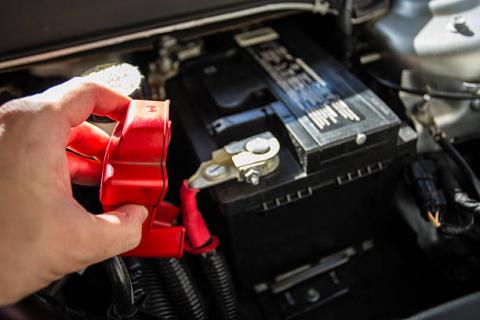
A car battery is a rechargeable cell in the SLI (starting-lighting-ignition) variety of batteries. They are also in the lead acid family of batteries.
The high power output of a car battery is necessary to supply a high current draw needed for the engine starter. A normal car battery provides about 12.6 volts and is divided into 6 separate cells; each cell produces about 2.1 volts per cell.
As the battery state of charge decreases the voltage produced also decreases.
Battery power is created through a chemical reaction. Inside your battery there are positive and negative lead plates that are immersed in an electrolyte solution (battery acid). This solution is a combination of water and sulfuric acid.
When the solution interacts with the lead plates, the chemical interaction creates voltage. This voltage is then released through the batteries positive terminal (red) and returned to the negative terminal (black).
Voltage from the alternator maintains the battery state of charge. This continuous cycle can produce electricity for years.
Stop by today we can help you choose the right battery for your vehicle and lifestyle. Our team can safely and professionally install your battery and get you back on the road.

 Sign-up today for service interval reminders such as: oil & filter, brakes, tires, and more... These parts are designed to wear & need to be replaced before any major damage occurs. We can help.
Sign-up today for service interval reminders such as: oil & filter, brakes, tires, and more... These parts are designed to wear & need to be replaced before any major damage occurs. We can help.